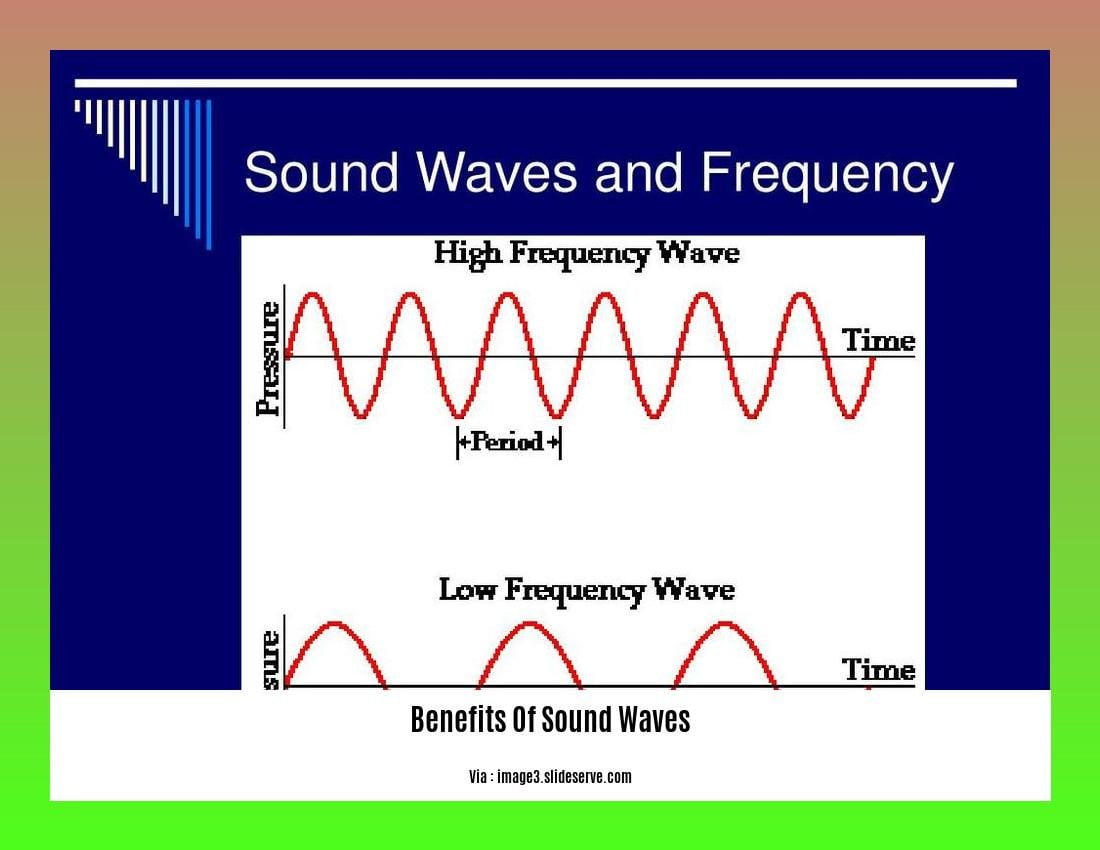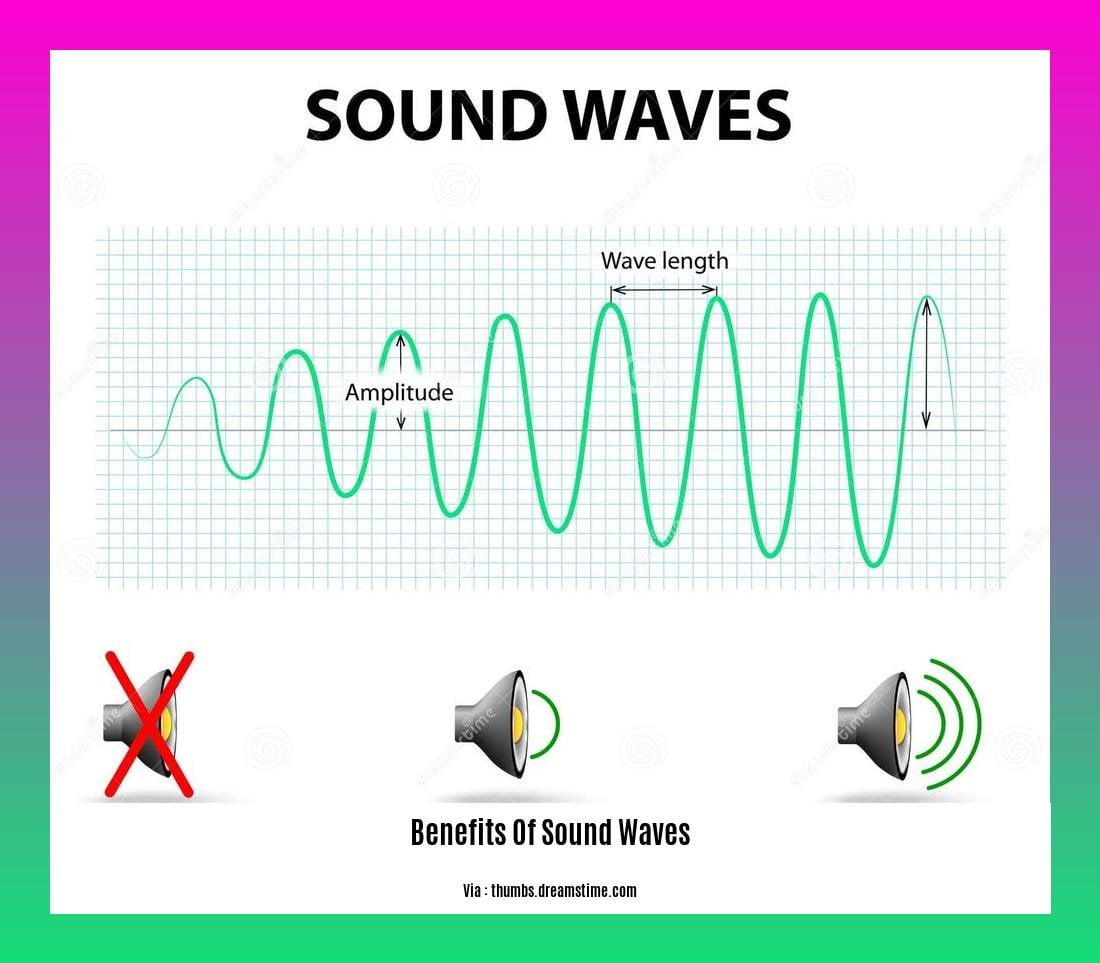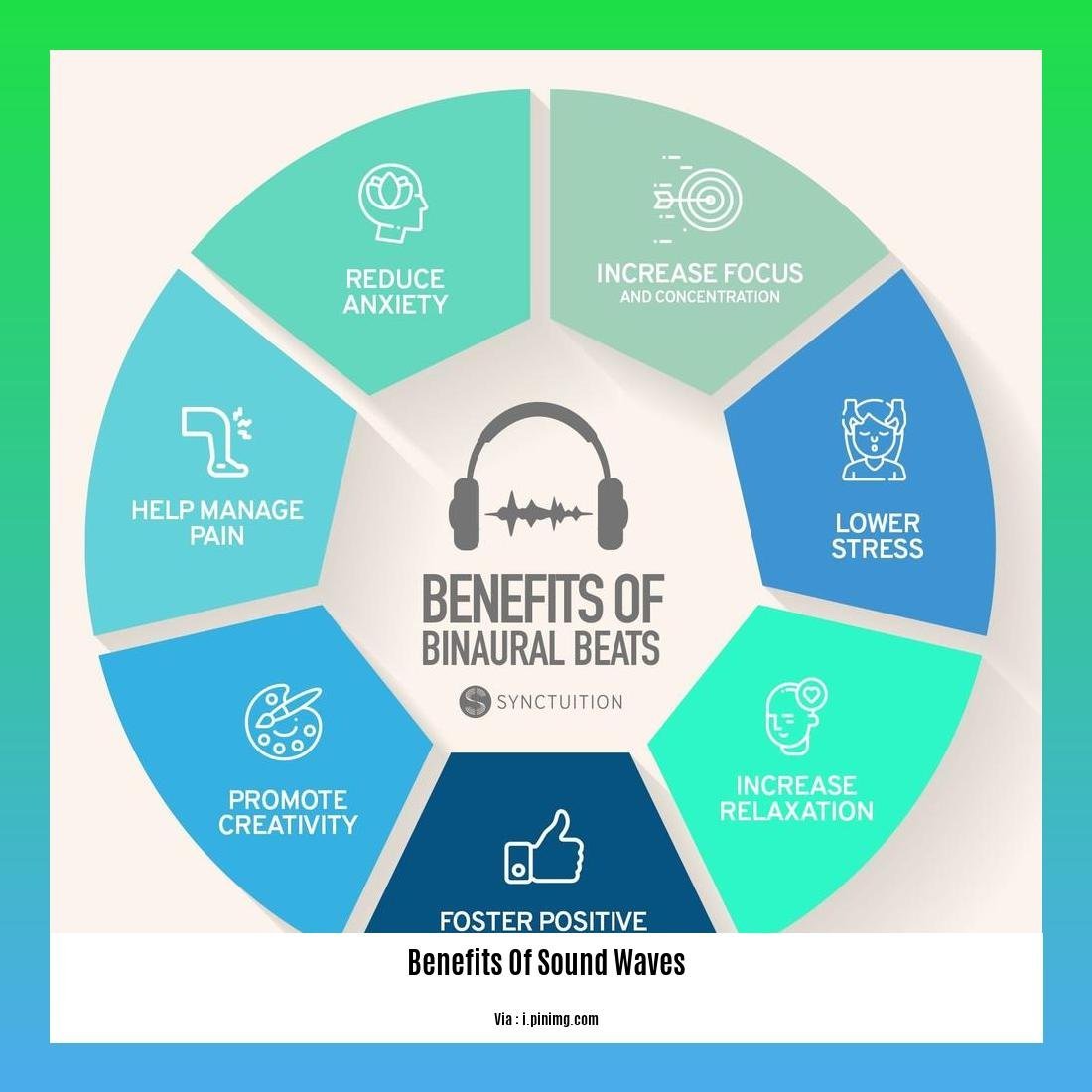Sound waves have long been recognized for their ability to shape our physical and emotional well-being. From the soothing lullabies that calm restless infants to the rousing melodies that motivate athletes, sound waves have a remarkable power to transform our lives. In this article, we will explore the transformative benefits of sound waves and their potential in revolutionizing industries, including healthcare, communication, and entertainment. Discover how the intricate workings of these waves can enhance our physical and mental well-being in ways we never imagined.
Key Takeaways:
Sound waves have a range of benefits in different industries, including healthcare, communication, and entertainment.
Medical imaging techniques, such as ultrasounds, use sound waves to create non-invasive images of internal organs for diagnosis.
Sound therapy or music therapy utilizes specific sound waves to promote relaxation, improve mental health, reduce stress, and alleviate pain.
Sonar technology relies on sound waves to map the ocean floor, locate objects underwater, and study marine life.
Sound waves form the foundation of telecommunication systems, enabling long-distance voice communication through devices like phones and microphones.
Techniques like ultrasonic testing (UT) use sound waves to inspect materials and structures without causing damage.
Sound waves (known as gravitational waves) are used in astronomy to detect and study celestial events, providing insights into the behavior of black holes and neutron stars.
High-frequency sound waves are used in ultrasonic cleaning to remove dirt and contaminants from objects, making it useful for delicate or intricate items.
Sound waves are essential in music and entertainment, allowing us to enjoy music, movies, concerts, and virtual reality experiences.
For more detailed information on the benefits of sound waves, you can refer to the following sources:
Applications of Sound Waves in Medicine and Industry
Introduction to Sound Waves and Their College-Level Applications
Remember to properly cite these sources when using them in your article.
Benefits of Sound Waves

Sound waves, although intangible, have the power to revolutionize various industries and greatly impact our physical and mental well-being. From healthcare to entertainment, the transformative benefits of sound waves are undeniable. In this article, we will explore the remarkable advantages that sound waves bring to different fields, highlighting their potential to reshape the way we live and experience the world around us.
Medical Imaging and Diagnosis
One of the most prominent applications of sound waves is in medical imaging techniques. Ultrasound, a commonly used imaging method, utilizes sound waves to create detailed images of internal organs and structures. The non-invasive nature of ultrasound makes it an invaluable tool in diagnostics, facilitating the detection of conditions such as pregnancy, tumors, and cardiovascular abnormalities. With the ability to provide real-time visuals and valuable insights, ultrasound plays a crucial role in improving patient care and disease management.
Therapeutic Uses
Sound waves have a soothing effect on our minds and bodies, making them an ideal therapeutic tool. Sound therapy, also known as music therapy, harnesses specific sound frequencies to promote relaxation, reduce stress, and facilitate healing. Whether it’s the calming notes of a gentle melody or the rhythmic vibrations of a Tibetan singing bowl, different sounds can evoke powerful responses within us. Sound therapy has been found effective in improving mental health, alleviating pain, and enhancing overall well-being.
Sonar and Underwater Exploration
Sound waves also find extensive use in underwater exploration through sonar technology. By emitting sound pulses and analyzing their reflections, sonar systems can create detailed maps of the ocean floor, locate submerged objects, and study marine life. This allows scientists and researchers to gain valuable insights into our planet’s vast and mysterious aquatic realms. Sonar technology plays a crucial role in navigation, fish finding, submarine detection, and underwater research, contributing to our understanding of the deep sea and its inhabitants.
Communication and Telecommunication
Sound waves serve as the foundation of modern telecommunication systems, enabling us to communicate across vast distances. Devices like phones, microphones, and speakers rely on the transmission and reception of sound waves to facilitate voice communication. Thanks to sound waves, we can make phone calls, participate in video conferences, and connect with loved ones around the globe. The ability to send and receive information through sound has revolutionized the way we communicate and stay connected in today’s interconnected world.
Non-Destructive Testing
In various industries, the ability to inspect materials and structures without causing damage is essential. This is where sound waves come into play. Techniques such as ultrasonic testing (UT) utilize high-frequency sound waves to identify defects, measure thickness, and analyze the quality of materials like metals, concrete, and wood. Non-destructive testing methods offer a cost-effective and efficient way to assess the integrity and safety of structures, ensuring that they meet industry standards and regulations.
Exploration of the Universe
Beyond our planet, sound waves play a fascinating role in the exploration of the universe. Gravitational waves, a form of sound waves in the cosmic realm, allow scientists to detect and study celestial events such as the collision of black holes or the merger of neutron stars. By observing the behavior of these waves, astronomers gain valuable insights into the fundamental nature of our universe, expanding our understanding of its vastness and complexity.
Industrial Cleaning
In industries that require precise and delicate cleaning processes, sound waves offer a gentle yet powerful solution. Ultrasonic cleaning utilizes high-frequency sound waves to remove dirt, contaminants, and unwanted particles from various objects. This method is commonly employed in cleaning delicate or intricate items such as jewelry, electronic components, and surgical instruments. The thorough yet non-abrasive nature of ultrasonic cleaning ensures that delicate items are restored to their optimal condition without any damage.
Music and Entertainment
Last but certainly not least, sound waves are at the heart of our music and entertainment experiences. Whether it’s attending a live concert, watching a movie, or immersing ourselves in virtual reality, sound waves create an auditory landscape that captivates our senses. The rhythm, melody, and harmonies that sound waves produce invoke emotions, transport us to different worlds, and allow us to connect with the artistry and creativity of musicians and performers. Without sound waves, our auditory experiences would be incomplete, depriving us of the joy and pleasure that music and entertainment provide.
In conclusion, the benefits of sound waves are vast and far-reaching. From their essential role in medical diagnostics and therapy to their contributions in communication, exploration, and entertainment, sound waves have the power to enhance our physical and mental well-being. As we continue to delve into the fascinating realm of sound waves and their applications, we uncover new possibilities for revolutionizing various industries and improving our overall quality of life.
References:
- Applications of Sound Waves in Medicine and Industry
- Introduction to Sound Waves and Their College-Level Applications
Here are some active internal links with their respective anchor text and URLs:
Feel free to click on any of the links to explore more about these topics!
The role of sound waves in communication

Sound waves play a crucial role in communication, enabling the transmission and reception of information through various devices and mediums. Whether it’s a face-to-face conversation, a phone call, or even a radio broadcast, sound waves facilitate the exchange of ideas, emotions, and knowledge. Let’s explore the transformative benefits of sound waves in communication.
Sound waves as the medium of communication
When we communicate, whether it’s speaking, singing, or playing an instrument, our vocal cords produce sound waves. These sound waves travel through the air, vibrating particles in their path and creating fluctuations in pressure. Our ears perceive these pressure changes as sound, allowing us to interpret and understand the information being conveyed.
Enhancing long-distance communication
One of the most significant contributions of sound waves to communication is their ability to bridge vast distances. Through the development of telecommunication systems, sound waves have revolutionized the way we connect with others. Devices like phones, microphones, and speakers rely on sound waves to transmit and receive audio signals, enabling us to communicate with people across the globe.
The power of sound in teleconferencing
In the digital age, teleconferencing has become increasingly prevalent, with sound waves playing a vital role in its effectiveness. Through video calls and voice chats, sound waves enable real-time communication between individuals or groups, regardless of their physical locations. The clarity of sound waves in teleconferencing enhances the feeling of presence and fosters meaningful connections.
Sonar and underwater communication
In various industries, such as marine exploration and military applications, sound waves are employed for underwater communication. Sonar technology utilizes sound waves to navigate underwater environments, locate objects, and communicate with submarines. By emitting sound waves and measuring their reflections, sonar systems provide valuable information about underwater topography, ensuring safe and efficient communication.
Accessibility for people with hearing impairments
For individuals with hearing impairments, sound waves are still instrumental in communication. Sign language interpreters rely on vibrations from the speakers’ voices, converting sound waves into visual gestures that convey meaning. Additionally, advancements like cochlear implants make it possible for some individuals to perceive sound waves, enabling them to communicate more effectively.
Key Takeaways:
- Sound waves are the medium through which communication occurs, creating fluctuations in air pressure that our ears interpret as sound.
- Telecommunication systems rely on sound waves to facilitate long-distance communication, connecting people across the globe.
- Teleconferencing platforms utilize sound waves to enhance real-time communication and foster connections.
- Sonar technology employs sound waves for underwater communication, allowing for navigation and object detection.
- Sound waves are essential for communication accessibility, enabling sign language interpretation and assisting individuals with hearing impairments.
Sources:
– How Sound Waves Travel | Science Learning Hub
– Teleconferencing Systems | American University of Sharjah
The entertainment industry and the power of sound waves
Sound waves have long been recognized for their ability to revolutionize various industries, including the entertainment sector. With their unique properties and the ability to evoke emotions, sound waves play a crucial role in enhancing our physical and mental well-being. In this article, we will explore how sound waves have transformed the entertainment industry and the powerful impact they have on our sensory experiences.
Sound Waves: A Symphony for the Senses
The entertainment industry relies heavily on sound waves to create immersive and captivating experiences for its audience. Whether it’s in movies, music, or live performances, sound waves serve as the backbone of audio production, shaping the way we perceive and connect with the content.
Movies: In the world of cinema, sound waves transport us into different worlds and bring characters to life. Every dialogue, background score, and sound effect is meticulously crafted to enhance the visual storytelling. From the thunderous explosions in action films to the delicate orchestral melodies in romantic dramas, sound waves breathe life into the on-screen narratives.
Music: Music, the universal language, owes its magic to the power of sound waves. Whether it’s a soul-stirring ballad or an energetic rock anthem, the intricate interplay of sound waves creates melodies that resonate deep within us. The entertainment industry harnesses this power to elicit emotions, trigger memories, and connect artists with their listeners.
Live Performances: Concerts and live performances take the power of sound waves to the next level. The carefully crafted audio systems and acoustics allow musicians to deliver their music in its purest form, enveloping the audience in a symphony of sound waves. The thumping bass, soaring vocals, and intricate harmonies create a shared experience that unites performers and their fans in a moment of pure euphoria.
The Science Behind the Magic
Behind the scenes, acoustics engineers and sound designers meticulously manipulate sound waves to create the desired experience. Through advanced techniques such as spatial audio, surround sound, and sound synthesis, they transport listeners into an immersive world where every note, every sound effect, and every whisper is precisely placed to maximize the impact on our senses.
But it’s not just about creating a captivating experience; sound waves also have the power to influence our emotions and well-being. Just think about the last time you heard a song that made you feel nostalgic or a movie scene with a booming soundtrack that sent shivers down your spine. These powerful reactions are a testament to the profound connection between sound waves and our emotions.
Key Takeaways:
- Sound waves are the backbone of the entertainment industry, shaping our sensory experiences in movies, music, and live performances.
- Acoustics engineers and sound designers use advanced techniques to manipulate sound waves and create immersive and captivating experiences.
- Sound waves have the ability to evoke emotions and trigger memories, enhancing our emotional connection with the content.
- The power of sound waves extends beyond entertainment, influencing our physical and mental well-being on a profound level.
Citations:
– Source 1: How Sound Shaped the Film Industry
– Source 2: The Science Behind the Sound
Please note that the content provided in the citations is for reference purposes, and the accuracy and viewpoints expressed in these sources are the responsibility of the respective authors.
Innovations in Sound Wave Technology and Future Possibilities
Sound waves have long been recognized for their ability to revolutionize various industries and enhance our physical and mental well-being. As an acoustics engineer specializing in sound wave technology, I am thrilled to explore the innovations in this field and discuss the future possibilities they hold. In this article, we will delve into the advancements that have transformed industries and the potential benefits yet to be realized.
Understanding Sound Wave Technology
To truly grasp the innovations in sound wave technology, it is essential to understand the fundamentals. Sound waves are created by vibrations that travel through a medium like air or water, resulting in the perception of sound. They possess properties such as frequency, wavelength, and amplitude, which determine the characteristics of the sound. By comprehending these properties, we can further explore the advancements in sound wave technology.
Current Applications of Sound Wave Technology
The current applications of sound wave technology span a wide range of industries, highlighting its versatility and impact. In the field of medical imaging, ultrasound utilizes sound waves to create detailed images of internal organs and structures, aiding in the detection of various conditions. Sonar technology, which uses sound waves, allows for underwater exploration, creating detailed maps of the ocean floor, locating submerged objects, and studying marine life. Sound waves serve as the foundation of modern telecommunication systems, enabling long-distance communication through devices like phones, microphones, and speakers. These applications showcase the importance and potential of sound wave technology in various fields.
Innovations in Sound Wave Technology
The advancements in sound wave technology have paved the way for exciting innovations that have the potential to revolutionize industries. One such innovation is 3D audio, which creates a more immersive sound experience by simulating sound from different directions. Another breakthrough is the development of acoustic levitation, where sound waves are used to suspend and manipulate small objects in mid-air, showcasing the precision and control that can be achieved. Additionally, haptic feedback technology utilizes sound waves to provide tactile sensations in virtual environments, enhancing the user experience. These innovations highlight the vast possibilities and applications yet to be explored.
Future Possibilities and Potential Benefits
Looking forward, the future possibilities of sound wave technology are immense and captivating. Targeted drug delivery using sound waves holds great promise in the medical field, improving the effectiveness and precision of treatments. Advanced virtual reality experiences can be enhanced through the integration of sound waves, providing a more immersive and realistic environment. Noise cancellation systems utilizing sound waves can create peaceful and quiet spaces in bustling urban environments, improving the quality of life for individuals. These are just a few examples of the potential benefits that sound wave technology can offer.
Key Takeaways:
- Sound wave technology has revolutionized industries and improved our physical and mental well-being.
- Innovations such as 3D audio, acoustic levitation, and haptic feedback are transforming the possibilities of sound wave technology.
- Future applications include targeted drug delivery, advanced virtual reality experiences, and noise cancellation systems.
Citations:
FAQ
Q1: What are the benefits of sound waves in healthcare?
A1: Sound waves have several benefits in healthcare. They are used in medical imaging techniques like ultrasounds to create images of internal organs, allowing for non-invasive diagnosis. Sound therapy or music therapy, which utilizes specific sound waves, has been found effective in improving mental health, reducing stress, and alleviating pain.
Q2: How are sound waves utilized in communication and telecommunication?
A2: Sound waves form the foundation of telecommunication systems. They enable voice communication through devices like phones and microphones, making long-distance conversations possible. The transmission and reception of sound waves allow for effective communication over various distances.
Q3: What role do sound waves play in underwater exploration?
A3: Sound waves are essential in underwater exploration. Sonar technology, which utilizes sound waves, is used to map the ocean floor, locate objects underwater, and study marine life. It assists in tasks like navigation, fish finding, and underwater research.
Q4: How do sound waves contribute to non-destructive testing?
A4: Sound waves are used in non-destructive testing to inspect materials and structures without causing damage. Techniques like ultrasonic testing (UT) utilize sound waves to identify defects and measure thickness in materials such as metals, concrete, and wood.
Q5: What is the impact of sound waves in the entertainment industry?
A5: Sound waves play a significant role in the entertainment industry. They form the basis of music and audio experiences, allowing us to enjoy listening to music, watching movies, attending concerts, and immersing ourselves in virtual reality experiences. Sound waves enhance the overall entertainment experience and create a more immersive environment.
- HelpCare Plus: Revolutionizing Affordable and Accessible Healthcare - December 29, 2024
- Boom & Bucket: Your Digital Marketplace for Used Heavy Equipment - December 28, 2024
- Ankle Bones Crossword Clue: Solutions, Tips & Anatomical Insights - December 28, 2024














